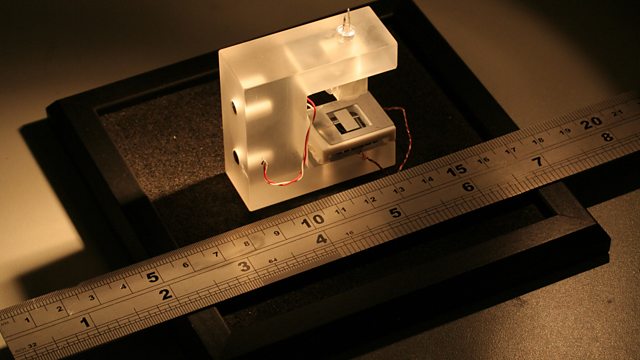
Mini Meter to Measure Gravity
Mini meter to measure gravity; Hobbit older than first thought; ��������ō; The Crunch Effect; Taste and sound; Cassava, the new super crop?
UK researchers have built a small device that measures tiny fluctuations in gravity, and could be used to monitor volcanoes or search for oil. Such gravimeters already exist but compared to this postage stamp-sized gadget, they are bulky and pricy. The new design is based on the little accelerometers found in smartphones. To begin with, the team - from the University of Glasgow - tested it by measuring the Earth's tides over a period of several days. Tidal forces, caused by the interacting pull of the Sun and Moon, not only drag the oceans up and down but slightly squash the Earth's diameter.
Hobbit Older Than First Thought
The human species Homo floresiensis, nicknamed ‘the Hobbit’ is older than previously thought. A new analysis published in the journal Nature shows the species probably went extinct about 50,000 years ago, and not 12,000 years ago as the original analysis suggested.
��������ō
In New Zealand, the near-extinct kākāpō will become the first species to have the genome of every single member sequenced, thanks to a crowd-funded conservation project. Adam Rutherford meets geneticist Peter Dearden, in the Zealandia conservation area in Wellington, to chat about these charming but daft birds, and efforts to save them from extinction.
The Crunch Effect: Why We Should Listen as We Eat
A Colorado State University study has found that hearing yourself eating food makes a difference to how much you eat – which means TV dinners might lead you to eat more. One of the authors, Dr Gina Mohr, told Claudia Hammond about how she did the study - with pretzels - and why we should listen to what our what food sounds like.
Beyond the Taste Buds
Claudia Hammond tickles her taste buds and looks at the science of taste. Scientists are now discovering that our perception of taste and flavour does not just come from the tongue, but our eyes, nose and even our ears all play a crucial role. She also discovers how the top scientists in the field can make her like the food she hates.
Cassava, the New Super Crop?
As the world’s population grows and the climate challenges our ability to grow crops, how can agriculture provide enough food? Can we get more from our current food crops for less? Scientists and farmers alike have been increasingly haunted by the environmental effects of high-intensity farming over the last half century. There is now an urgent need to be more mindful of the landscape and our finite ecological resources. Professor Kathy Willis, science director of Kew Gardens, looks at how we can breed better-adapted and more efficient crops. Rice is a staple food for more than half the world’s population. To maintain this in the face of population growth and land-loss to urbanisation, rice yields will have to increase by over 50% by 2050. Kathy Willis examines an ambitious plan to turbocharge photosynthesis in rice – improving the way it captures sunlight, to produce sugar and oxygen from carbon dioxide and water in hotter dryer climates. New technology to imaging plant roots below ground is also having a profound impact on plant root architecture that breeding programmes hope to capitalise on in order to improve any crop’s ability to forage for water and nutrients. But can we achieve the necessary varieties in time? Should we re-evaluate some of the highly resilient crops we have tended to undervalue such as sorghum and cassava?
(Photo caption: Gravimeter © Dr Giles Hammond, University of Glasgow)
The Science Hour was presented by Roland Pease with comments from ���˿��� Science reporter Jonathan Webb
Producer: Alexandra Feachem
Last on
Broadcasts
- Sat 2 Apr 2016 08:06GMT���˿��� World Service Australasia
- Sat 2 Apr 2016 22:06GMT���˿��� World Service except News Internet
- Sun 3 Apr 2016 01:06GMT���˿��� World Service Australasia
- Mon 4 Apr 2016 05:06GMT���˿��� World Service South Asia
Podcast
-
![]()
Unexpected Elements
The news you know, the science you don't

